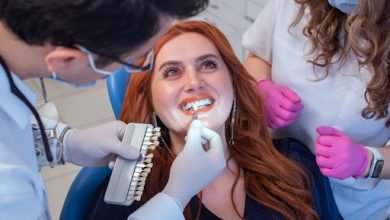What Is Hyperpigmentation? All You Should Know
Hyperpigmentation is a state of the darkening skin caused by excess melanin production. Melasma, age spots, acne scars or other dark scars and blemishes are common types of hyperpigmentation. The distinctive dark patches can appear on the legs, hands or any other part of the body but are common in the face.
Melasma, also known as ‘mask of pregnancy,’ is caused by excess estrogen and is often seen in pregnancy or women taking birth control pills. Melasma will usually disappear after pregnancy or when a woman stops taking hormonal contraceptives, but there are many other forms of hyperpigmentation which are not so easy to get rid of, and a little effort is needed to remove the dark marks.
It has been studied that hyperpigmentation can take place on all skin types, it is usually seen in those with darker skin tones.
Causes Of Hyperpigmentation
1. Birth Control Pills and Pregnancy
During pregnancy and taking birth control pills, some women develop a form of hyperpigmentation called melasma. It is usually found in people with darker skin but usually disappears after the pregnancy or when you cease to take birth control pills.
2. Exposure to the sun
This is the most common cause of hyperpigmentation and one that can be prevented. The ultraviolet rays of the sun will enhance the production of melanin in the skin, thus causing you to tan. However, if you have been overexposed throughout the years, this out of control production often results in dark spots on the face or hands. It usually occurs later in life, so they are often called age spots.
3. Acne, Eczema or Scarring
Hyperpigmentation can also occur if you have severe acne or eczema when you have picked at the scabs or acne before they are healed. It can also occur if the skin has suffered from a burn or another bad injury like a cut or exposure to chemicals. These are known as post-inflammatory hyperpigmentation and usually, occur while the skin is healing. These can last for a year or more and sometimes are permanent reminders of your ordeal.
4. Illnesses and Other Conditions
Sometimes hyperpigmentation occurs during some diseases such as autoimmune diseases or when taking certain medications such as antibiotics. It is usually temporary and goes away when you are no longer taking medicine, or your condition improves. It has been known to occur during chemotherapy or if you have a vitamin deficiency or metabolic disorder.
Signs and Symptoms of hyperpigmentation
Certain factors can trigger the symptoms of hyperpigmentation, such as certain kinds of detergents and soaps, coarse clothes, some chemicals, weather conditions like heat and humidity, and smoking.
The symptoms of hyperpigmentation can appear at any place on the body, but mostly on the face, forearm, behind the elbow, upper chest, neck, ankles and the knees. Toddler hyperpigmentation treatment depends on the seriousness of the symptoms. Typically, the symptoms of hyperpigmentation first appear on the cheeks of infants or toddlers.
The signs and symptoms of hyperpigmentation can vary from one person to another depending on the type of hyperpigmentation they are suffering from. However, most hyperpigmentation patients seem to have the symptoms of itchy and dry skin patches.
Some people may suffer from oozing lesions or blisters. The other symptoms can typically include the development of thick crusts, scaling, flaking, and exfoliation of skin, raised surface areas, pinkish or reddish bumps, and hives. Appropriate hyperpigmentation treatment can alleviate almost all these symptoms.




